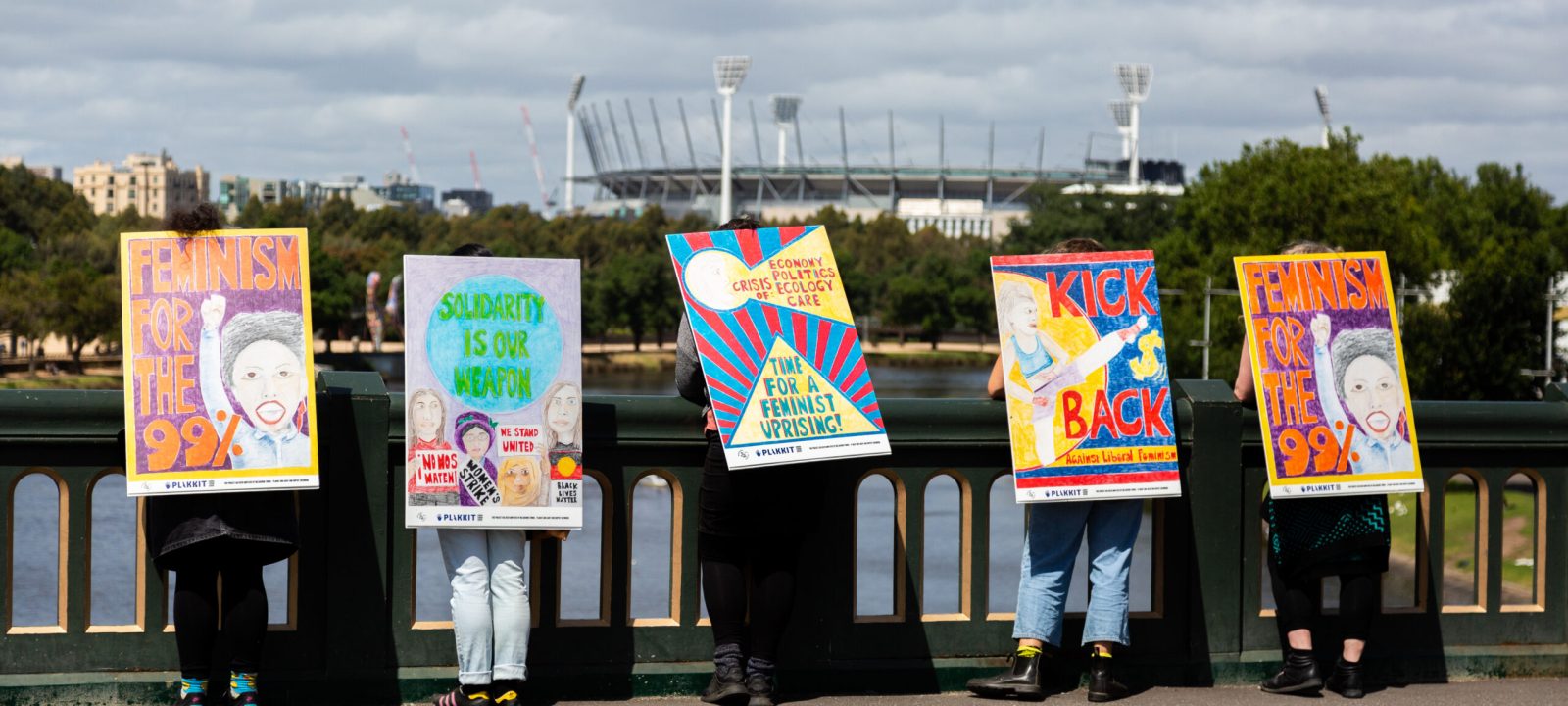
We chat all things protest and We the People related with multidisciplinary artist Katie Sfetkidis.
Adhocracy – Vitalstatistix’s renown annual arts hothouse – supports the development of new art and performance. It runs September 2-4. Full details, including program, HERE.
First of all, tell us about ‘We the People’ – what’s the core concept of the project and what inspired you to pursue it.
The core question is “how has the pandemic changed the way we protest and the way we think about protesting”. It’s a response to the feeling of colliding set of crises – be it climate change, social and economic inequality, colonisation, housing instability, the treatment of refugees, to name a few – set against the issues of public safety.
The work was inspired by my experience of being in lockdown in Melbourne CBD over 2020 and 2021. It gave me a lot of time to think deeply about issues that I care about, whilst also feeling like I couldn’t participate in public demonstration in the same way, mainly due to public health concerns, but also shifting public attitudes towards large scale public demonstration and the use of the police in response. I started wondering if there were other ways that we could gather that could circumnavigate some of these issues. I was particularly inspired by the ways people were using digital technology to both connect with others and share ideas within local and global communities and I began to wonder how one could harness the emancipatory powers of digital technology to create a public demonstration that could exist both in a digital realm and IRL.
As an artist, I think it’s really important to civically engage. This work brings together my interest in feminism and the history of activism. In general my practice is influenced by what has come before and ‘We the People’, in a lot of ways feels like an extension and mash up of a number of projects I have worked on over the past few years, including ‘The Feminist Poster Project’ (2020-2021) and ‘The Women’s COVID-19 Time Capsule’ (2020-2022).
This piece explores the intersection between more traditional forms of public demonstration and the digital realm – how has this changed in recent years?
I think the pandemic has had a huge impact on our relationship to technology. Video calls and online gathering spaces are much more common now than they were two years ago, and social media has really been used to drive global social movements, and this has sometimes translated into large scale in person demonstrations – e.g., Black Lives Matter.
What is so exciting to me about these online spaces are the possibilities they open up for new encounters. For many people, in the early days of the pandemic, video streaming platforms allowed people to access a world and events that had been inaccessible before, perhaps because of chronic illness, disability or cultural and economic reasons. It also allowed people to connect across time and space in different ways.
I am interested in how this might translate to public demonstration. For many reasons, there are people who can’t attend a public demonstration; this could be because of health, age, access, work and family commitments or public safety. I wonder how digital technology can offer an alternative, and a way to bring different groups of people together across space and time.
This seems to be a project that is very interested in the role of ‘political ephemera’ (banners, flags, placards and so on). How will you be depicting that?
Visual material is really important to any public demonstration and will be key to this work. This could be placards and posters, which already feature quite heavily in my practice, but I have dreams to also create some bigger pieces; puppets etc, along the lines of the Burning Koala from a recent Extinction Rebellion demonstration.
At this stage, I am planning on incorporating previous pieces from ‘A Feminist Poster Project’ into this new work and make new signs, banners, and flags. I really love the idea of flag waving as something that is visually striking and can incorporate movement into the piece. It’s also a key feature for many older activists I have come across in my research and I am keen to unpack this more.
The process of creating this ephemera is just as important as their visual impact. Whilst at Adhocracy, I am inviting people to come and create new posters and banners in the studio that can feature in the work. These creative exercises allow time to think through ideas or talk them through in a communal setting, which works to build community.
Where does ‘We the People’ go after its appearance at Adhocracy?
In my dreams, ‘We the People’ will be a global event, occurring simultaneously in sites across the globe. In the short term, I will be undertaking another creative development in Melbourne later this year and continuing to talk with activist communities across Australia. At this stage I also hope to spend some time in NSW and Queensland early next year.
Anything else audiences should know?
‘We the People’ is just as much about the journey as it is about the final outcome. Like many past projects, I am seeking to engage with women in the community to highlight their efforts and facilitate an exchange of ideas. I would encourage anyone up for a yarn or just wanted to listen to drop into the open studio/workshops.

